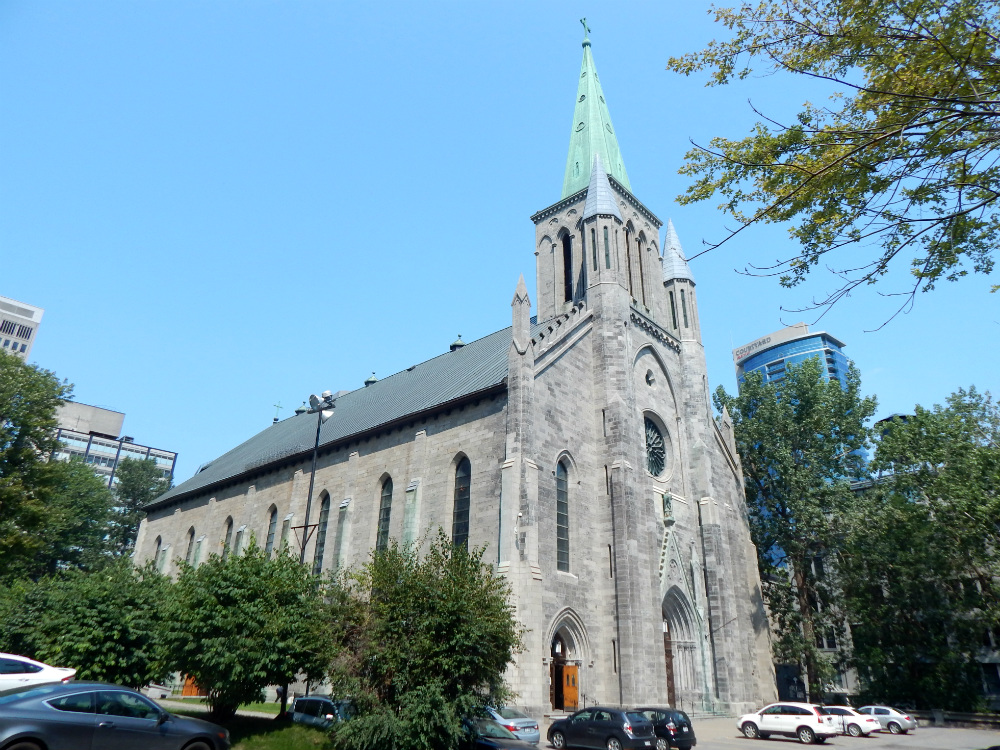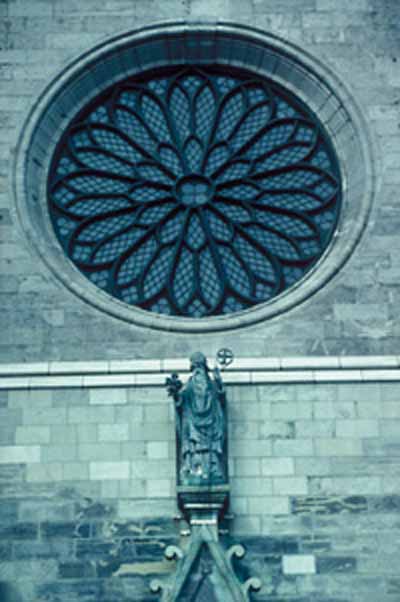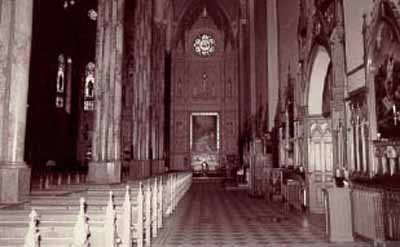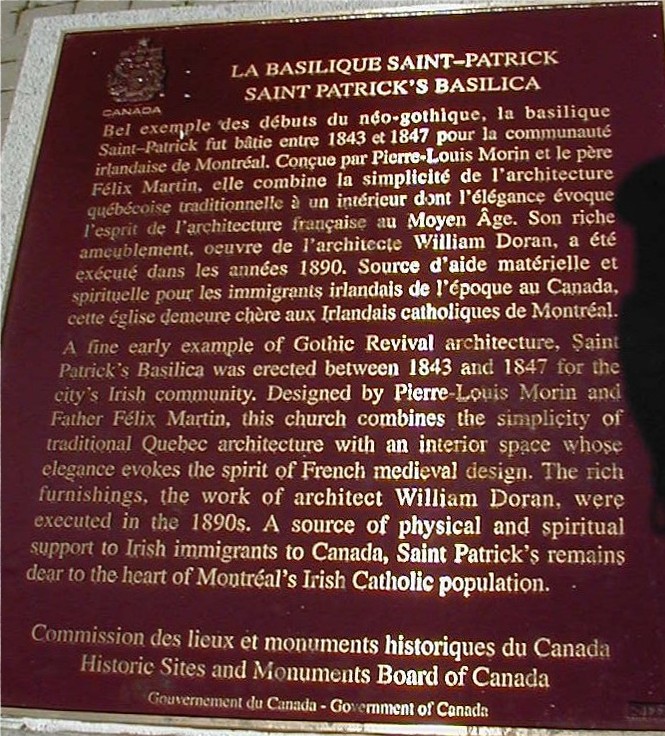St. Patrick's Basilica National Historic Site

© Luc Brunelle/Ministère de la Culture et des Communications
St. Patrick's Basilica was designated as a national historic site in 1990.
Commemorative plaque: 454 René Levesque Boulevard West, Montréal, QuebecFootnote 1
A fine early example of Gothic Revival architecture, Saint Patrick's Basilica was erected between 1843 and 1847 for the city's Irish community. Designed by Pierre-Louis Morin and Father Félix Martin, this church combines the simplicity of traditional Quebec architecture with an interior space whose elegance evokes the spirit of French medieval design. The rich furnishings, the work of architect William Doran, were executed in the 1890s. A source of physical and spiritual support to Irish immigrants to Canada, Saint Patrick's remains dear to the heart of Montréal's Irish Catholic population.
Description of historic place
St. Patrick’s Basilica National Historic Site of Canada is a large stone church built in 1843-47 in the French Gothic Revival style. It sits on a large lot occupying one half of a city block near the southwest corner of Réné-Lévesque Boulevard and Saint-Alexandre Street in a busy commercial sector of downtown Montréal, Québec. The striking basilica features various French Gothic Revival details such as a tall, central tower and a prominent rose window. The formal recognition consists of the church on its footprint.

© Parks Canada/P. St. Jacques

© Parks Canada/P. St. Jacques
Heritage value

© Parks Canada/S. Ricketts
St. Patrick’s Basilica was designated a national historic site of Canada in 1990 because:
- it is a fine example of French Gothic Revival architecture in Canada;
- it witnessed and provided physical and spiritual support to one of the largest early influxes of Irish immigrants to what is now Canada and remains the heart of the Irish population of Montréal.
St. Patrick’s Basilica was constructed in 1843-47 as the parish church of Montréal’s growing Irish immigrant population. As soon as the church was completed, its clergy helped care for Irish immigrants suffering from a typhoid fever epidemic. Due to its continuing religious, charitable and educational vocations, St. Patrick’s became the heart of the Irish community in Montréal. Its real and symbolic role was evident in its choice as the location for the funeral of Thomas D’Arcy McGee in 1868.

© Parks Canada
St. Patrick’s Basilica is a very early and fully expressed example of the French Gothic Revival style in Canada. This revival style was based on extensive studies into 13th-century French architecture carried out by French scholars. They and their followers appreciated the period’s rational approach to the relationship between architectural and structural elements. St. Patrick’s illustrates this approach in the clarity of its structural elements, in its symmetry and in its verticality, and in the use of archaeologically correct decoration.
The designers of St. Patrick’s Basilica, architect Pierre-Louis Morin and the Jesuit priest Félix Martin, incorporated the use of French Gothic Revival style in the building. Both men had sound knowledge of and interest in French medieval architecture through practice and, in the case of Martin, through close familial relationships with proponents of the style. The interior of St. Patrick’s Basilica features remarkably complete examples of Québec ecclesiastical craftsmanship and artistry. It was originally decorated in 1845-51 and additions were made twice later in the century. The initial decoration was supervised by Victor Bourgeau. Antoine Plamondon created the paintings of the Stations of the Cross, and the main altar and two side altars were richly carved by Perrault, Paré and Ouellet.
Sources: Historic Sites and Monuments Board of Canada, Minutes, June 1996; Commemorative Integrity Statement, December 1997.
The National Program of Historical Commemoration relies on the participation of Canadians in the identification of places, events and persons of national historic significance. Any member of the public can nominate a topic for consideration by the Historic Sites and Monuments Board of Canada.
- Date modified :